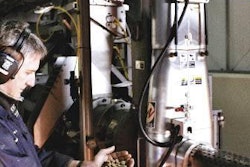I recently had the opportunity to attend the Waltham International Science Symposium in Washington, DC from September 15-18. The program was packed with four full days of innovations in companion animal nutrition.
Topics of discussion included:
Nutritional evolution;
Obesity and weight management;
General nutrition; and
Canine genomics.
Obesity
Dr. Paul Trayhurn, chair of Nutritional Biology at the University of Liverpool and editor-in-chief of the British Journal of Nutrition, spoke on changing perspectives of white adipose tissue. He stated obesity is now recognized as being characterized by chronic, mild inflammation. Also, white adipose tissue has moved to center stage in obesity research as a consequence of its major role in metabolic homeostasis and its direct association with the diseases associated with being obese.
Dr. Alex German, head of the Royal Canin Weight Management Clinic at the University of Liverpool, discussed the problem of obesity in cats and dogs and the need for quick, inexpensive and non-invasive methods of measuring body condition. He did mention that, as of yet, there have been no pharmaceuticals licensed for weight loss in companion animals, but, it will probably just be a matter of time.
Abstracts
Dr. John Bauer of Texas A&M presented a paper on post-prandial lipolytic activities of diacylglycerol (DAG)-rich meals with varying glycemic index (GI) carbohydrates. His study found that DAG (Enova oil) enriched diets along with lower-GI carbs had a better anti-adipogenic effect and reduced glucose and insulin response.
Another study reported that its results did not support any beneficial effect of conjugated linoleic acid (CLA) on body composition and energy expenditure in normal weight cats. In yet another abstract report, results suggested that dietary cellulose fed to increase gastric filling plays an important role in reducing food intake of cats.
An interesting paper reported on the influence of Genistein (soy product), PUFAs and vitamins D3 and K1 on bone metabolism in dogs. Results of this study indicated the combination of substances reduced bone resorption in ovariohysterectomized dogs. Another study involving long-chain omega-3 PUFAs during neonatal development and the perinatal period demonstrated that adding pre-formed dietary omega-3 long-chain PUFAs in the 1.2-3.5% range is a more effective means of enriching maternal plasma-DHA and results in improved visual performance in puppies.
Controversies
Saturday morning brought a 90-minute session that included an interactive audience poll and discussion on common controversies in clinical nutrition. The sessions were active and the time went quickly with topics including raw food diets, calcium oxalate urolithiasis, carbohydrate levels in cat foods and controversial ingredients. Time ran out and the session turned over to the next topic at handgenomics.
Genomics
The majority of the last two days of sessions revolved around the canine genome. Distinguished speakers from around the globe discussed how genes play a role in complex diseases. Dr. Elaine Ostrander, senior investigator and branch chief of Cancer Genetics for the National Institutes of Health, gave an overview of the canine genome.
The Canine Genetics coordinator for The Kennel Club of the United Kingdom, Dr. Jeff Sampson, gave an interesting perspective on the genetics of breed diversity and how an understanding of the canine genome might be beneficial for the world of the purebred. Other diseases and their genetic components were also covered, and the final session was an overview of nutritional genomics by Dr. Kelly Swanson of the University of Illinois.
This well-attended meeting brought together the top nutritional research scientists from around the world and covered many of the topics that are going to be of major concern to the petfood industry in the very near future. Look for research abstracts from this meeting to appear in future issues of the Petfood Industry E-newsletter and magazine in Research Notes.
















